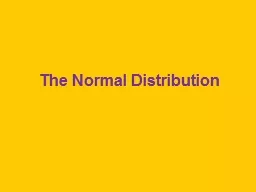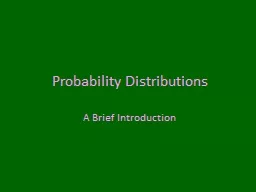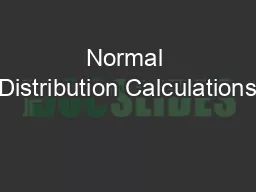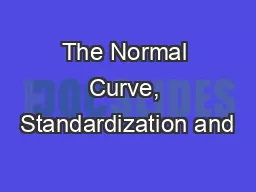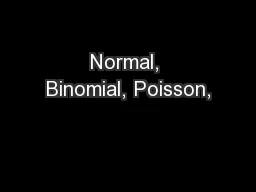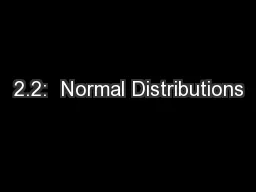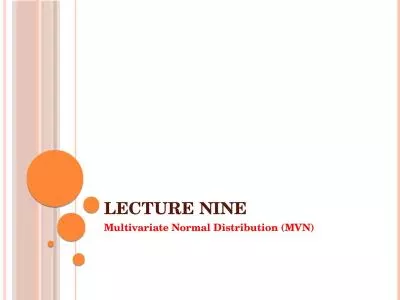PPT-The Normal Distribution
Author : test | Published Date : 2016-06-15
History Abraham de Moivre 1733 consultant to gamblers Pronunciation Pierre Simon Laplace mathematician astronomer philosopher determinist Carl Friedrich
Presentation Embed Code
Download Presentation
Download Presentation The PPT/PDF document "The Normal Distribution" is the property of its rightful owner. Permission is granted to download and print the materials on this website for personal, non-commercial use only, and to display it on your personal computer provided you do not modify the materials and that you retain all copyright notices contained in the materials. By downloading content from our website, you accept the terms of this agreement.
The Normal Distribution: Transcript
Download Rules Of Document
"The Normal Distribution"The content belongs to its owner. You may download and print it for personal use, without modification, and keep all copyright notices. By downloading, you agree to these terms.
Related Documents

